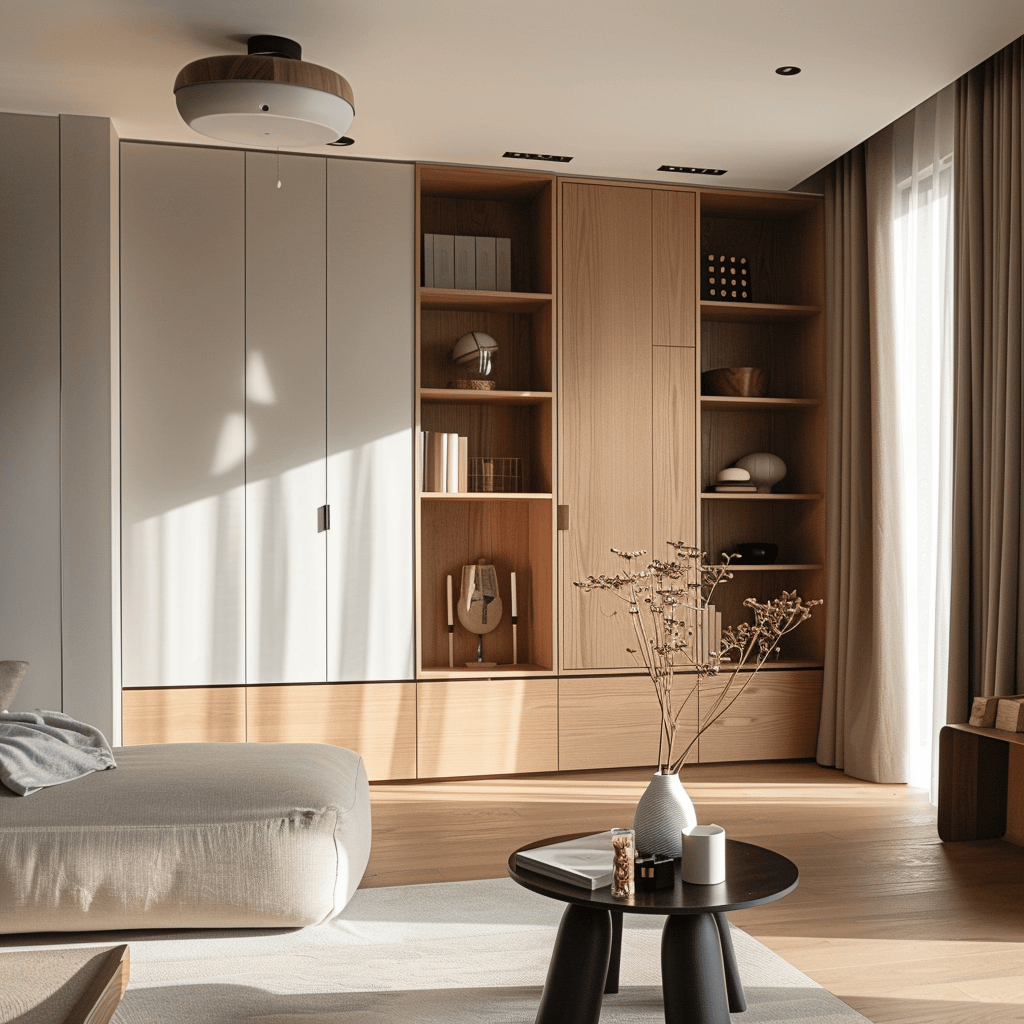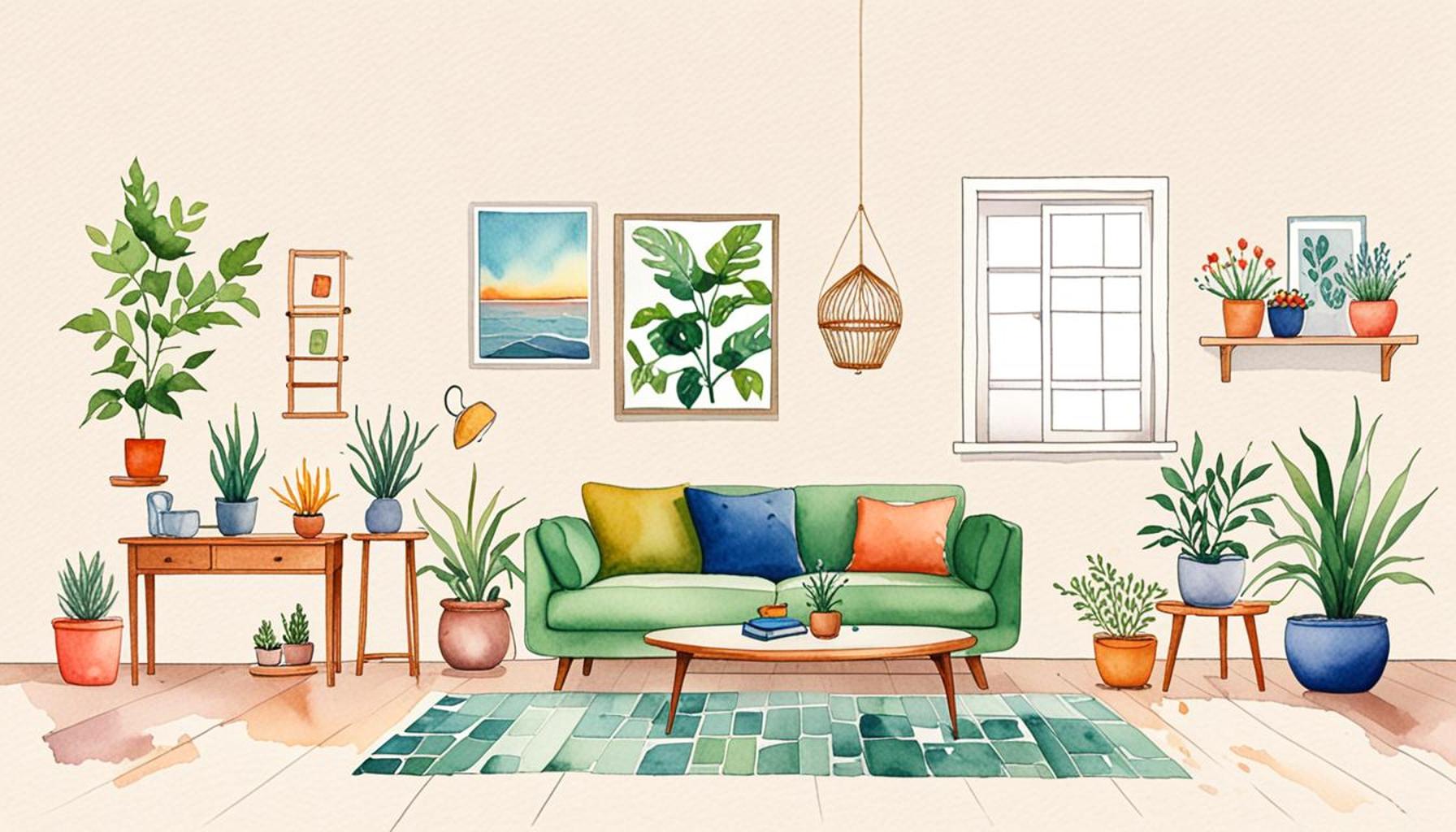The Importance of Intention in Creating a Minimalist Space

The Power of Intentional Living in Minimalism
As individuals increasingly seek balance in their hectic lives, the significance of intention in crafting a minimalist space cannot be overstated. A minimalist environment transcends the mere act of decluttering; it embodies the principles of intentional living, where every item and design choice echoes the occupant’s values and lifestyle. By creating a sanctuary that radiates purpose and clarity, we foster not only aesthetic appeal but also a profound sense of well-being.
Incorporating intention into minimalist design involves several key elements that work in harmony to promote peace and functionality:
- Functional Choices: Each item in your space should either serve a specific function or evoke joy. This might mean investing in high-quality furniture that combines comfort with style or selecting kitchenware that simplifies meal preparation. For example, a well-designed cutting board can transform a mundane task into an enjoyable experience, while a carefully chosen sofa provides a perfect place to unwind.
- Thoughtful Colors: Color plays a crucial role in shaping our emotions and perceptions. Choosing a calming palette, such as soft blues, greens, and neutrals, can foster tranquility and serenity in spaces like bedrooms and living areas. In contrast, bright hues might be employed sparingly to add bursts of energy in creative zones such as home offices or art studios, encouraging an energizing atmosphere.
- Meaningful Decor: The decor you choose should tell your story and reflect your journey. Consider displaying a collection of travel souvenirs that evoke cherished memories or artwork that resonates with your identity. These intentional touches not only personalize your space but also serve as conversation starters that invite guests to connect on a deeper level.
Implementing these practices not only organizes physical spaces but also clears mental clutter. By focusing on what truly matters, individuals can cultivate environments that spark creativity and reduce anxiety. Moreover, the act of intentionally choosing what occupies our space allows for deeper introspection regarding our values and priorities, ultimately enhancing our quality of life.
How does this intentional approach to design reshape our surroundings and influence our mindset? Exploring the intricate interplay between our physical environment and mental state reveals the limitless potential for transformation. By embracing minimalism with purpose, we embark on a journey towards creating spaces that nurture the soul, fostering not just an elegant aesthetic but also profound satisfaction in our everyday lives.
DISCOVER MORE: Click here to unlock creative workspace ideas

Crafting a Mindful Environment
At the heart of minimalism lies a profound understanding of intentionality—the deliberate choices that shape our physical spaces and, consequently, our mental landscapes. When individuals embark on the journey toward minimalist living, they are not just eliminating excess; they are curating a space that reflects their core beliefs and priorities. This deliberate crafting of one’s environment encourages mindfulness and awareness, leading to a more centered lifestyle.
The foundational principle of intentional living can be broken down into several essential components that directly influence the effectiveness of a minimalist space:
- Purposeful Functionality: Every element in your home should serve a clear purpose. From the multi-functional dining table that accommodates family gatherings to the sleek shelving that displays only the most valued books, these choices should resonate with daily activities. A minimalist kitchen, for instance, is not merely about having fewer pots and pans; it is about selecting high-quality, versatile items that enhance culinary experiences.
- Mindful Materiality: The materials chosen for furniture and decor are significant in promoting an intentional atmosphere. Using sustainable materials can reflect a commitment to environmental values, while items crafted by local artisans may symbolize support for community and craftsmanship. This attention to material not only enriches the aesthetic quality of a space but also imbues it with meaning.
- Consistent Themes: Establishing a cohesive theme throughout your space can amplify the feeling of tranquility. Consistency in design choices—from the patterns on textiles to the styles of furniture—creates a seamless flow that encourages restful living. For example, a Japanese-inspired minimalist retreat may feature natural woods, soft lighting, and simple, functional decor, evoking a serene ambiance conducive to relaxation.
- Curated Collections: Rather than filling a home with a random assortment of items, a truly minimalist space thrives on curated collections that resonate with personal significance. This could include a display of family photographs arranged on a gallery wall or a collection of art pieces from local artists that reflect themes of nature or community. Each item should evoke a sense of belonging while remaining uncluttered.
The beauty of an intentional minimalist space is not just in its simplicity but in the clarity it brings to one’s life. By reassessing the physical space we inhabit, we gain insights into our values and what truly contributes to our happiness. As we shed distractions and embrace the essence of what we genuinely need, our environments transform into havens of peace.
Ultimately, the act of creating a minimalist space extends beyond physical decluttering; it invites us to embark on a journey of personal discovery. With every intentional choice, we curate a narrative that highlights our priorities, fostering environments that inspire rather than inhibit our growth and well-being.
| Advantage | Description |
|---|---|
| Clarity of Purpose | A focused intention sets the foundation for a minimalist space, allowing for clarity in organization and aesthetics. |
| Enhanced Well-being | Intentional design fosters an environment that promotes relaxation and mental clarity, crucial for reducing stress. |
In the realm of minimalism, understanding the importance of intention enriches the transformative process of our spaces. When redefining our living or work areas, the first step involves establishing a clear clarity of purpose. This clarity serves as a guiding star, ensuring that every item in the space aligns with our goals, facilitating a harmonious, organized environment. Among its many benefits, having a well-defined intention promotes a deliberate selection of furnishings and decorations, ultimately leading to a space that resonates with personal values and functional needs.Additionally, creating a minimalist space rooted in intention significantly contributes to enhanced well-being. A thoughtfully designed environment has the power to cultivate a sense of calm, reduce anxiety, and stimulate creativity by eliminating unnecessary distractions. By embracing this philosophy, individuals can create sanctuaries that reflect their inner peace and aspirations. As we explore the principles of minimalism, the intersection of intention and space becomes essential for anyone looking to embark on this enriching journey.
DISCOVER MORE: Click here for expert tips on organizing your compact space
Intentional Living and Psychological Benefits
The essence of living intentionally extends beyond aesthetics and functional choices; it profoundly affects our psychological well-being. A well-curated minimalist space not only fosters a serene environment but also influences our mental clarity and emotional stability. Research has shown that our surroundings can significantly impact our mood and behavior. Thus, the importance of intention in creating a minimalist space cannot be overstated.
Reduced Stress and Anxiety: Clutter has been linked to increased levels of stress and anxiety. A minimalist environment, where every item serves a purpose or brings joy, can help create a sense of control and calm. By intentionally selecting what remains in our space, we reduce visual and mental clutter, which can lead to a more peaceful mind. A study published in the journal Environment and Behavior found that individuals in cluttered environments tended to have higher cortisol levels, a hormone associated with stress. By prioritizing simplicity, we not only craft a beautiful living space but also cultivate our mental health.
Greater Focus and Improved Productivity: In a world overflowing with distractions, having a minimalist space can enhance focus and productivity. An intentional setup free from excess allows individuals to channel their energy toward what truly matters—be it work, creativity, or relaxation. For instance, creating a dedicated workspace with only essential items, such as a laptop, a notebook, and a plant, can signal our mind to engage and concentrate. According to an article in the Harvard Business Review, cluttered spaces can lead to decreased productivity due to divided attention. Harnessing intention in our spaces can, therefore, help us achieve our goals more efficiently.
Enhancing Social Connections: Intentionally designed spaces can also improve our relationships. By creating inviting areas for gatherings, such as a cozy living room or an open dining area, we encourage connection and community. A minimalist approach to entertaining promotes genuine interaction, free from the distractions of excess possessions. As social psychologist Dr. Susan Fiske states, our social environments are a reflection of our priorities. By crafting spaces that emphasize connection over consumption, we make room for genuine relationships.
The Role of Personal Reflection: Creating a minimalist space requires introspection and an understanding of one’s values. It encourages individuals to ask critical questions about what truly matters to them. This reflective process can lead to profound personal growth. For example, while decluttering, one might discover that a particular item evokes fond memories or represents a milestone. Recognizing the emotional significance of our belongings allows us to make intentional choices that align with our identity. The experience of letting go can be liberating, ultimately revealing what we cherish most.
As individuals seek to establish minimalist spaces characterized by intention, they find that every choice resonates with their values, passions, and aspirations. This journey toward intentional living not only transforms physical spaces but can lead to a holistic, meaningful existence. The significance of intention in minimalism extends beyond mere aesthetic appeal; it modifies how we interact with our environments and ourselves, paving the way for clarity, well-being, and fulfillment.
DISCOVER MORE: Click here for tips on organizing your cabinets
Embracing Intention for a Harmonious Lifestyle
In sum, the importance of intention in creating a minimalist space transcends mere aesthetics; it invites a deeper connection between individuals and their environments. By consciously curating our surroundings, we not only reduce stress and anxiety but also enhance our focus, productivity, and social connections. This intentional approach fosters mental clarity and emotional well-being, granting us the tools to navigate our daily lives with purpose.
As we reflect on the role our spaces play in shaping our experiences, it becomes evident that minimalism is not just a trend but a philosophy that promotes a more meaningful existence. Each selection—whether it’s a favorite piece of art or a functional piece of furniture—should resonate with our values, aspirations, and the life we wish to lead. This process of simplification not only liberates us from unnecessary clutter but also empowers us to uncover what truly matters.
Ultimately, exploring the impact of intentional living can be a transformative journey. It encourages personal growth through introspection, leading to greater fulfillment and satisfaction within our everyday lives. By embracing minimalism with intention, we create spaces that nourish our minds, inspire our hearts, and allow for authentic relationships. In a world often overwhelmed by choice, the practice of intentionality stands as a guiding principle, reminding us that less can indeed be more.


